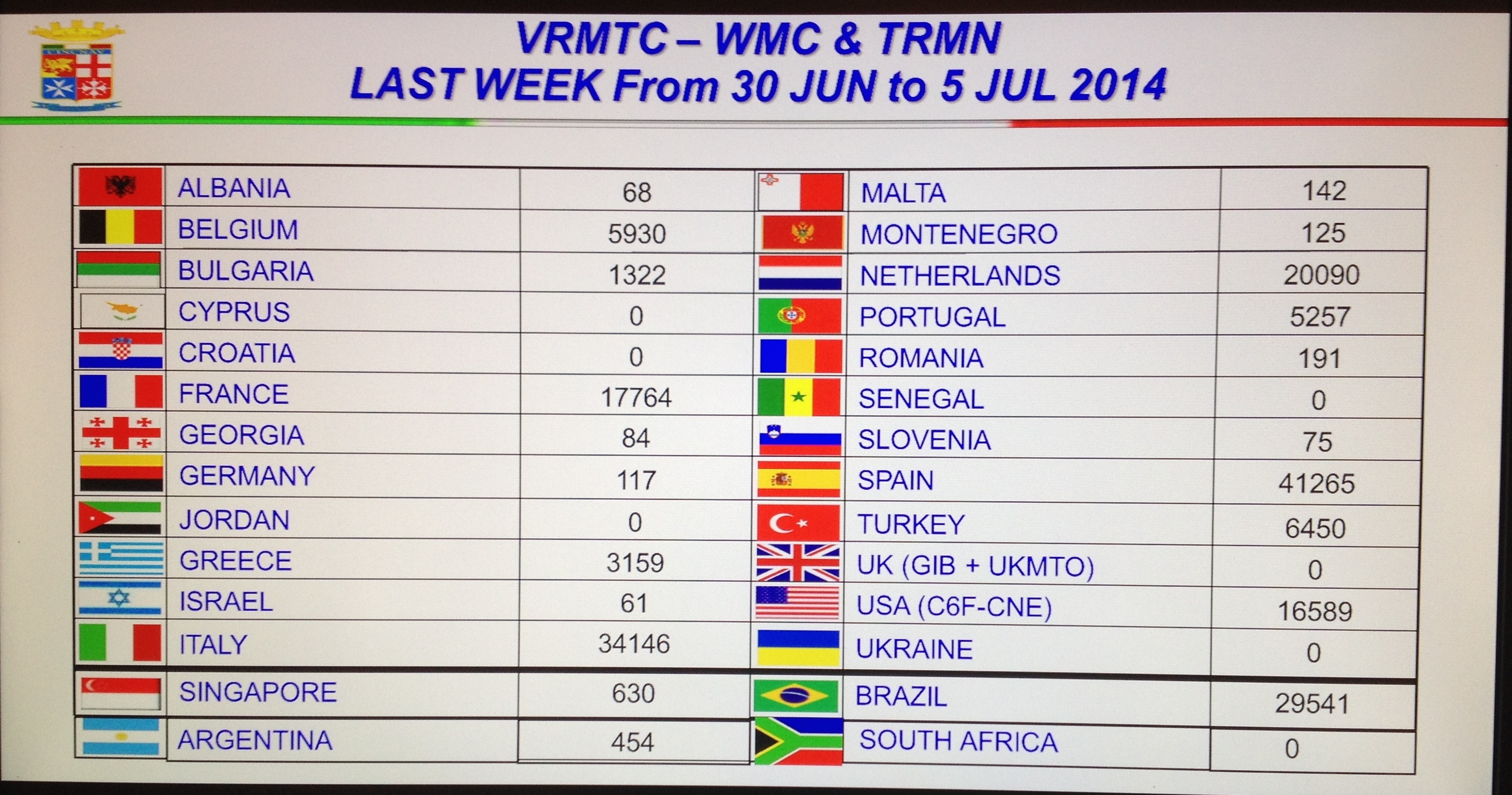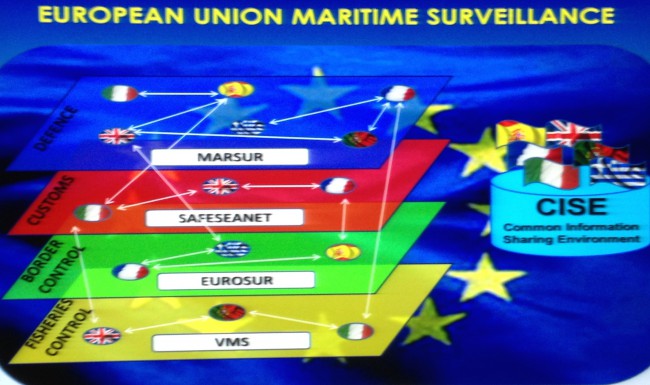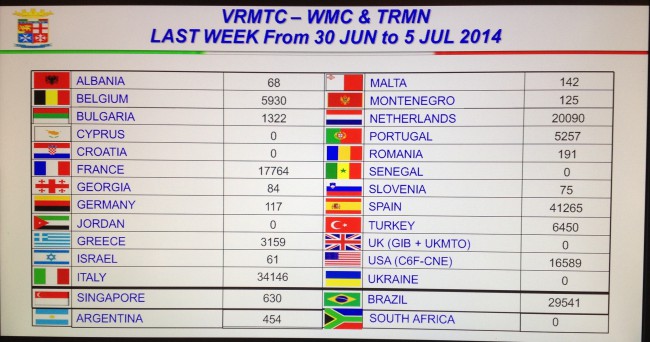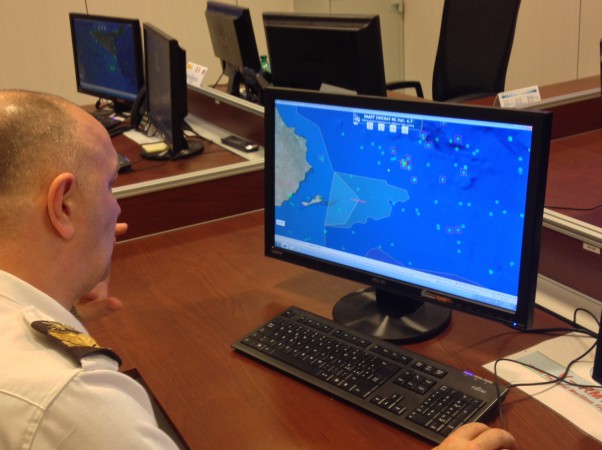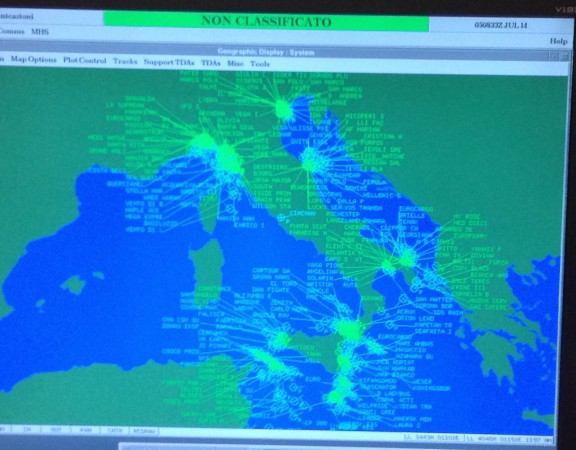At the Italian Navy HQ in Rome (CincNav)
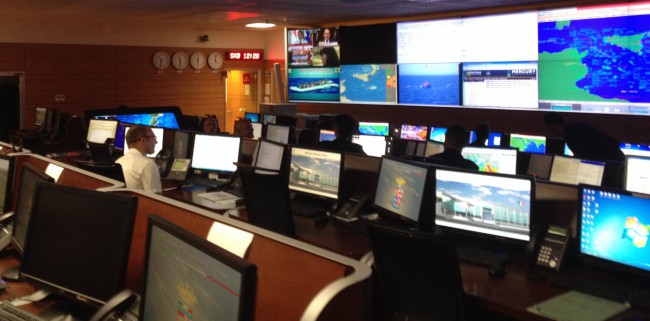
(BRUSSELS2 to Santa Rosa, near Rome) Apart from the traffic jams of the Roman capital, we left for the countryside. After a few km, an area under severe fences looms. The command center of the Italian Navy (CincNav) is there, brand new. Previously installed in prefabricated buildings, it was built on the Santa Rosa base, after the decision taken in 1999 to reorganize the General Staff of the Navy, and inaugurated in 2006. An interesting visit. Because it is there that the Italian rescue operation at sea is coordinated, Mare Nostrum, to help the canoes of refugees and migrants, mainly from Libya, crossing the Mediterranean in search of a haven of peace.

Information from different sources
All information from commercial sources first passes to the VRTMTC, the Virtual regional maritime traffic center. They « are then mixed with other sources (those of radars, maritime patrol planes, helicopters) which go upstairs at the MOC, the Maritime Operations Center.
At CMISM, the national interministerial maritime surveillance center (Centrale nazionale interministeriale di sorveglianza marittimale) receives information from other agencies. The objective, as one officer explained, is to deconflict information from all sources.
The regional maritime traffic monitoring center
In a first room arrive and are mixed, information from merchant ships (VRMTC). The exchange of information is voluntary. " Everyone gives the information they want. A necessity ! " You need to exchange information, where the ships are, where they leave from, where they go explains an officer. Most commercial traffic information is provided by national authorities.
If some countries seem to play the game - Spain (41.265 data), France (17.764 data), Netherlands (20.090 data), etc... or the United States with the HQ of the 6th fleet - others seem more reluctant, for example, the United Kingdom and its UKMTO system which did not provide anything.
The interdepartmental crisis room
This room — which is located on the ground floor — has just been opened. Right here " we collect and merge all the data ". The information comes from the coastguards, the European Union system, the fisheries control center, the maritime traffic service, Marsur (the European surveillance system), the monitoring center (Mssis) of NATO . And even Mercury, the secure "cat" of the EU's anti-piracy operation in the Indian Ocean and off Somalia.
Alongside the navy soldiers, only a coast guard and a policeman were present that day. " We hope to convince others to join us, it's a political problem, too concedes, a little disappointed, an officer. If the initial operational capacity exists, there is still no date for the full operational capacity (FOC) of this room. Each of the entities with jurisdiction in maritime matters is reluctant to come under the leadership of the navy.
Ability to detect “abnormalities”
With the automatic vessel identification system, it is possible to have basic information: the name of the vessel, its IMO identification number, flag, type, origin and destination as well as the planned stopover , and its latitude/longitude position. This automatically. " But not all ships have this system. We are campaigning to extend this AIS system” explains a center manager.
« It's a good thing but it can also be a bad thing. Of course, you can turn the transponder, tamper with it, make it say information you want and hide information you don't want. (...) You also cannot automatically spot a ship with terrorists or a suspicious ship. (But) with this system, which is quite intelligent, we can detect when a vessel does not have an identity or spot certain anomalies. For example a ship that takes a direction opposite to that officially announced. Which immediately makes him suspect.
Each circle has a different color to check for an anomaly. Thus, on that day, a vessel flying the Luxembourg flag (the "Maersk Sheerness") presented an anomaly: " the direction indicated does not correspond to the orientation of the vessel (Türkiye) says an officer, If the vessel type is not identified, or other information is missing or mismatched, the vessel is contacted. (...) A vessel becomes suspect when it does not respond to the AIS signal. »
The operational, decision-making room
In this room, screens on each workstation, large screens on the wall, and the inevitable clocks that run time according to time lines: H+2 for European time, H+1 for Middle Eastern time, Z for Zulu for universal time...
There is even an E+30 for the hour in India. History, no doubt, to remind us that Italian marines were taken prisoner by the Indian police while carrying out their mission and are still being held far from home.

« This room allows us to manage all the elements in real timel — explains Rear Admiral Saponero. A passionate sailor! “We can follow the situation live if necessary “, through the cameras on board the boats or on the surveillance planes. It is also " possible to hold a video conference, with a ship's captain, if necessary ».
The number of operators varies according to the intensity of the crisis, from around fifteen in ordinary times to 60-70 in the event of an intense crisis. " I hope I never see this ! says the admiral.
(Nicolas Gros-Verheyde, at CincNav, near Rome)
